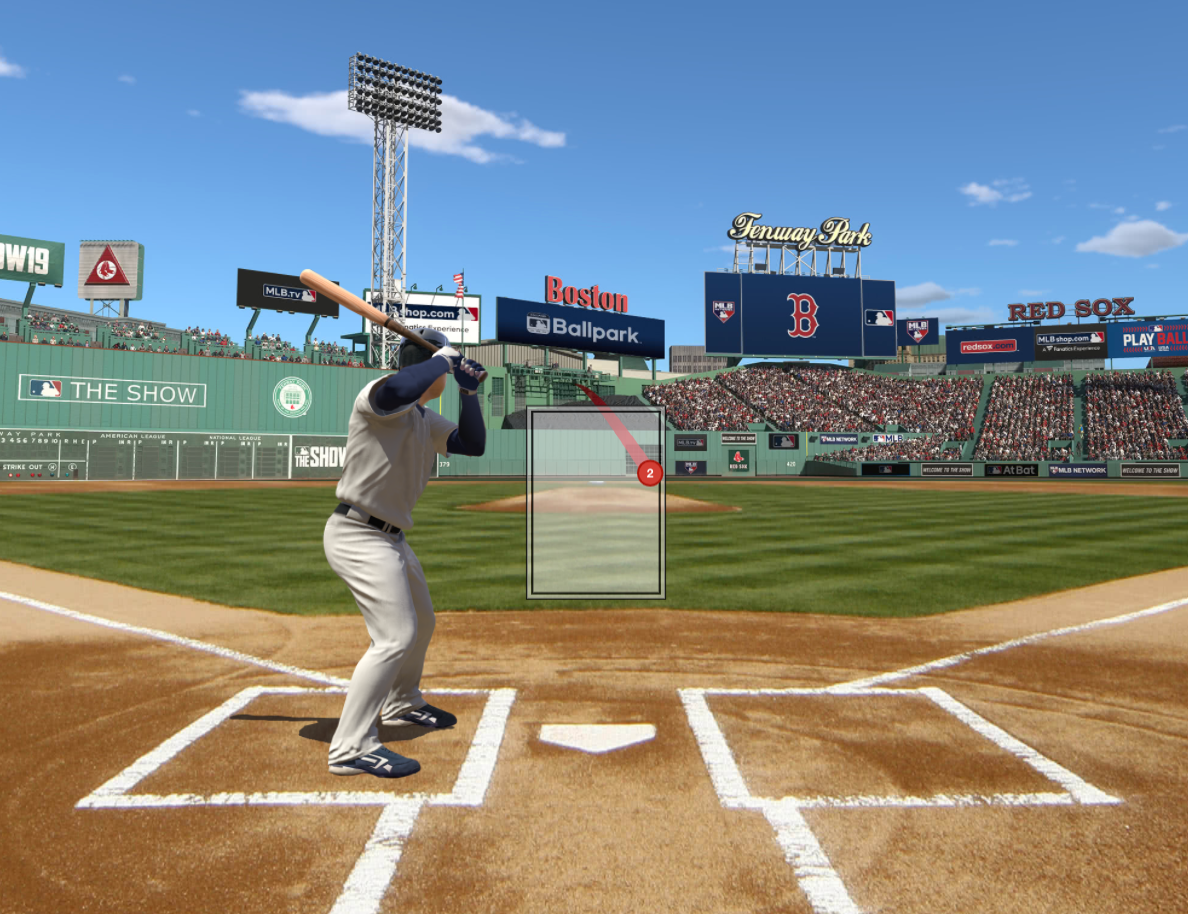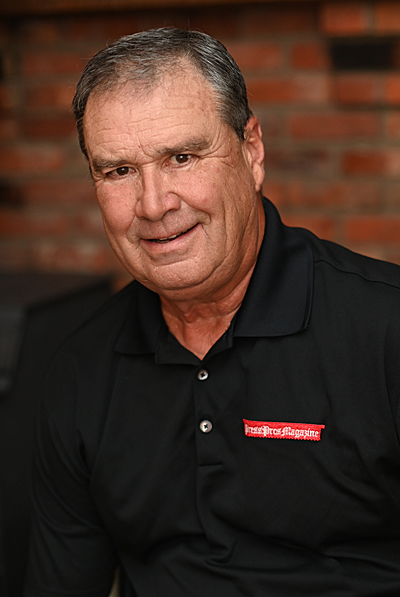
This example of K-zone is higher than it should be, not as low as it should be, and not nearly as wide as it should be. Translation: You have people who never played the game trying to mandate how the game should be played. (Press Pros File Photos)
Watching day one of the baseball playoffs was an embarrassment for the umpires who worked the plate. Is there an answer? Yes, there is!
 A friend from Pennsylvania texted me during Tuesday night’s Phillies-Marlins game.
A friend from Pennsylvania texted me during Tuesday night’s Phillies-Marlins game.
“You need to watch the guy calling balls and strikes,” the text read. “He’s having a terrible night.”
A terrible night?
“Yeah,” he texted back. “He’s really inconsistent on the close pitches down. One’s a strike and the next one is a ball.”
So I did watch, and he was right. Umpire Stu Scheurwater did have a lot of close pitches, and some he called strikes, and some he called balls.
But here’s what else I saw. From a former umpire, and one who worked hundreds of Triple A games back in the day, none of those pitches were ‘bad’ calls…and no one would have even suspected if it weren’t for K-Zone, the framing box that they show on TV that allows you to see the rigid determination of the strike zone, compared to the umpire’s judgment of what’s a strike and what’s not.
According to K-Zone he didn’t have a good night.
But according to my own experience and the fact that he called a lot of strikes early that were borderline…he forced hitters from both team to be more aggressive, swing the bats, and make the pace of play better than it would have been, otherwise.
There were complaints about balls and strikes in other games, as well, but I didn’t watch those, so I can only comment on Stu Scheurwater’s work, which I’ll explain this way.
Yes, even without K-Zone it was obvious that he did show some inconsistency…mostly ones that were high. Some he called strikes, and some he called balls. And when they expanded the interpretation of the strike zone a few years back they did it in order to call more high strikes.
Yes, he called a couple of low pitches strikes that looked questionable on camera.
But…better he call a borderline pitch a strike than not. Because when you call strikes you put the idea in batters’ heads that they need to be aggressive, and swing the bat.
This, by the way, is an issue with amateur baseball and the guys who work those games. They do the best they can, given their experience, but with young pitchers you can’t expect them to throw the ball with any consistency over a 17-inch-wide plate. It makes for a boring game to play, to watch, too many walks, and it’s a discouragement to players, themselves, because they know it’s not easy. It’s another, plausible reason for young kids not to play baseball. The learning curve for pitchers can be frustrating.
Worse, I see this a lot in the Big Ten, where in the case of freshman pitchers they’re just one year removed from high school and still learning how to pitch.
When I was umpiring back in the 70s and 80s it was a frequent point of discussion with big league umpires that I knew personally…over where do you draw the line?
The best answer I ever got came from the late Doug Harvey, who worked National League games for thirty years…1962 through 1992…considered the best umpire of all time, and a member of the Hall of Fame, in Cooperstown.
Said Harvey one night in Atlanta, after working the plate for Greg Maddux: “If Maddux is throwing the ball a ball’s width off the plate you’d better call it a strike. If you don’t, you’re going to miss the late news. You call that pitch a strike and the batters will adjust. When they adjust the game gets better – more swings, more balls in play, and more plays made in the field. You make the game more interesting to watch, and you have a 2-hour, 20-minute game. If you call those pitches a ball, you have a 3-hour game. It’s a matter of game management.”
A lot of umpires called the strike zone more aggressively from that era, for the same reason. When you call more strikes you make it a better, more interesting game. Of course, that’s not popular with all coaches.
I mentioned it to Ohio State’s Bill Mosiello last year and he fumed about having his hitters having to swing at bad pitches just because the umpire was managing the pace of the game by calling more strikes.
But by the same token, Mosiello and other coaches enjoy their own pitcher benefiting from a more generous strike zone.
The reality is this. After watching high school baseball for decades, only a very small percentage of pitchers are good enough to throw to a strict strike zone that’s 17 inches wide, so why try to force what you know they can’t do? Or, which I like better, widen the plate to 20 inches!

Editor/publisher Sonny Fulks writes OHSAA sports and Ohio State baseball for Press Pros Magazine.
It isn’t much better in college. Only a slightly bigger percentage of older, more experienced pitchers can do it. The 5% that can are the ones that usually get drafted. The ones that can’t get a business degree, or become a high school coach. But the umpires make it tougher because they’re being evaluated on Big Ten Network and if they don’t adhere to the imaginary box they won’t get regional NCAA tournament assignments, or consideration for the World Series.
And I conclude with this. The OHSAA and other governing bodies are crying for more people to officiate. The older, experienced ones are dying off, and even those who still do a good job are fed up with constant scrutiny…or the abuse they get from culture that has no stomach for discipline and authority on the field. Ejections are a thing of the past in baseball. Technical fouls in basketball are just as rare because officials fear not being popular and not getting tournament assignments. And football is increasingly officiated by young officials who never actually played football. Someone told them it was a great way to stay in shape, keep up with the game, and make some extra money. At least, that’s what the PSAs claim.
If you want to make baseball better get rid of K-Zone, altogether. Take it off of the broadcasts of major league and college games, and use the human eye, instead of technology, to determine the consistency of the men behind the mask. Give people who watch one less thing to bitch about. Like a lot of other things in life, sometimes the less we know, the better off we are.
If you don’t believe me, wait until they start using robots and the game becomes worse. Wait until David Bell takes a baseball bat out to home plate and beats the non-human, non-thinking, emotionless game adjudicator into a pile of scrap.
Then ask again…what’s wrong with baseball?


